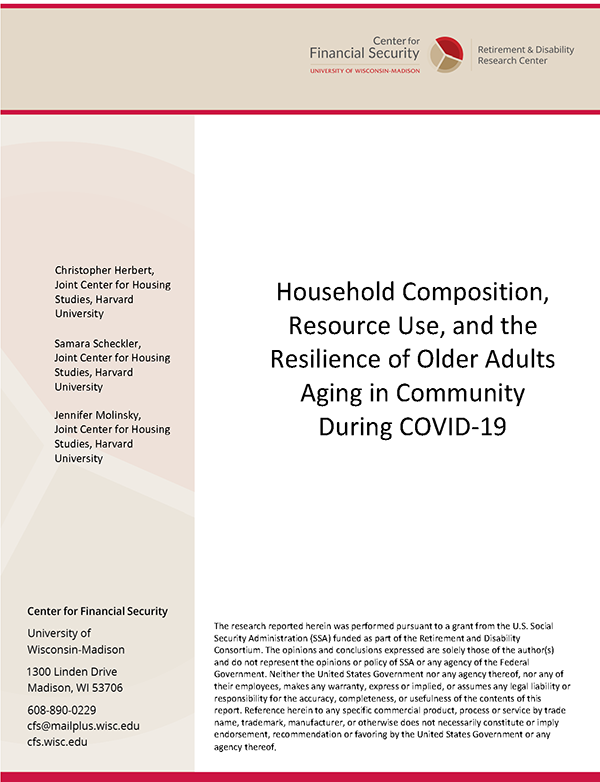Household Composition, Resource Use, and the Resilience of Older Adults Aging in Community During COVID-19
Household composition is associated with older residents’ access to resources. This research uses the pandemic period as a stress-test to detect differences in resilience between older adults who lived alone, with a partner, or with other co-residents. Using the Health and Retirement Study (HRS) from 2010 through 2018, we first developed a profile of pre-pandemic needs and resources for each household composition. Using the 2020 HRS survey wave, we then compared pandemic-period experiences between the three household types. Older adults living in partner households had more economic resources prior to the pandemic and experienced the fewest disruptions to their finances and personal assistance compared with other types. Older adults living alone entered the pandemic with the least financial resources and personal assistance, particularly in the context of need. These residents also lost more assistance and experienced more loneliness during the pandemic. Co-resident households received the most informal personal care support, which remained relatively stable during the pandemic. They had more economic resources than single-person households prior to the pandemic but experienced more pandemic-related financial hardships than other types. Household composition was systematically related to resilience during the pandemic, and Social Security policy might increase the capacity of older adults living alone to cope with large-scale disruptions.

